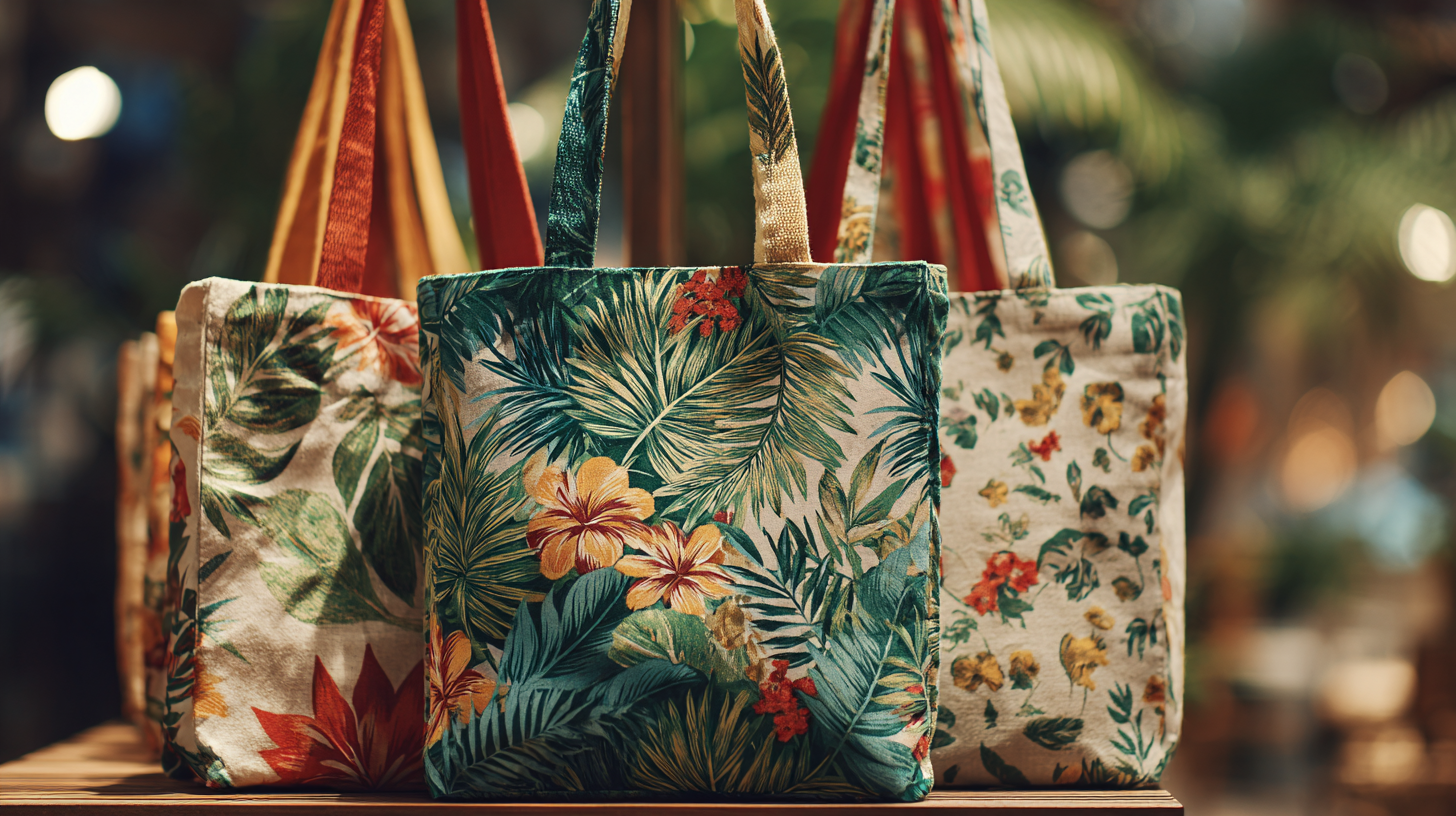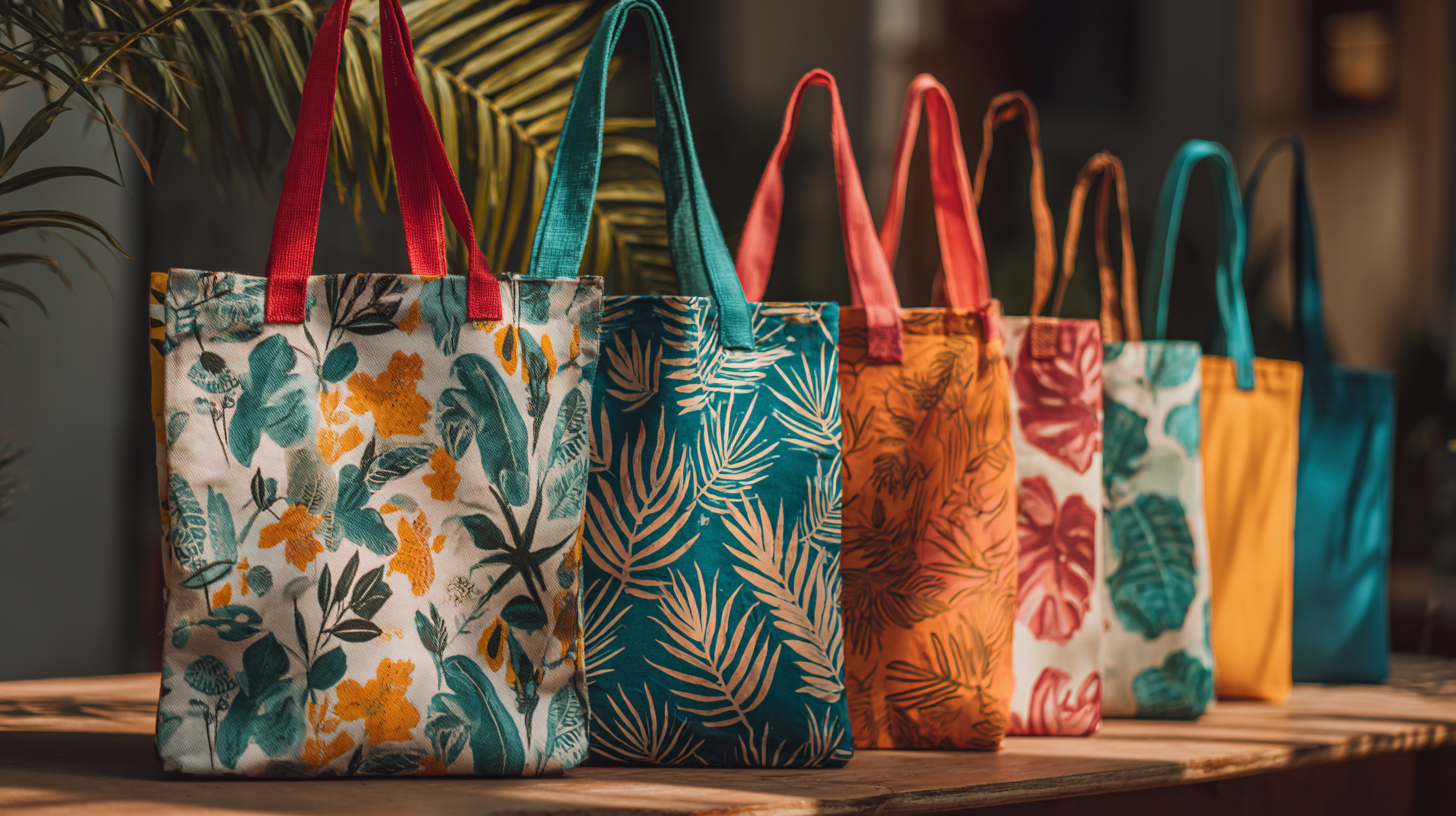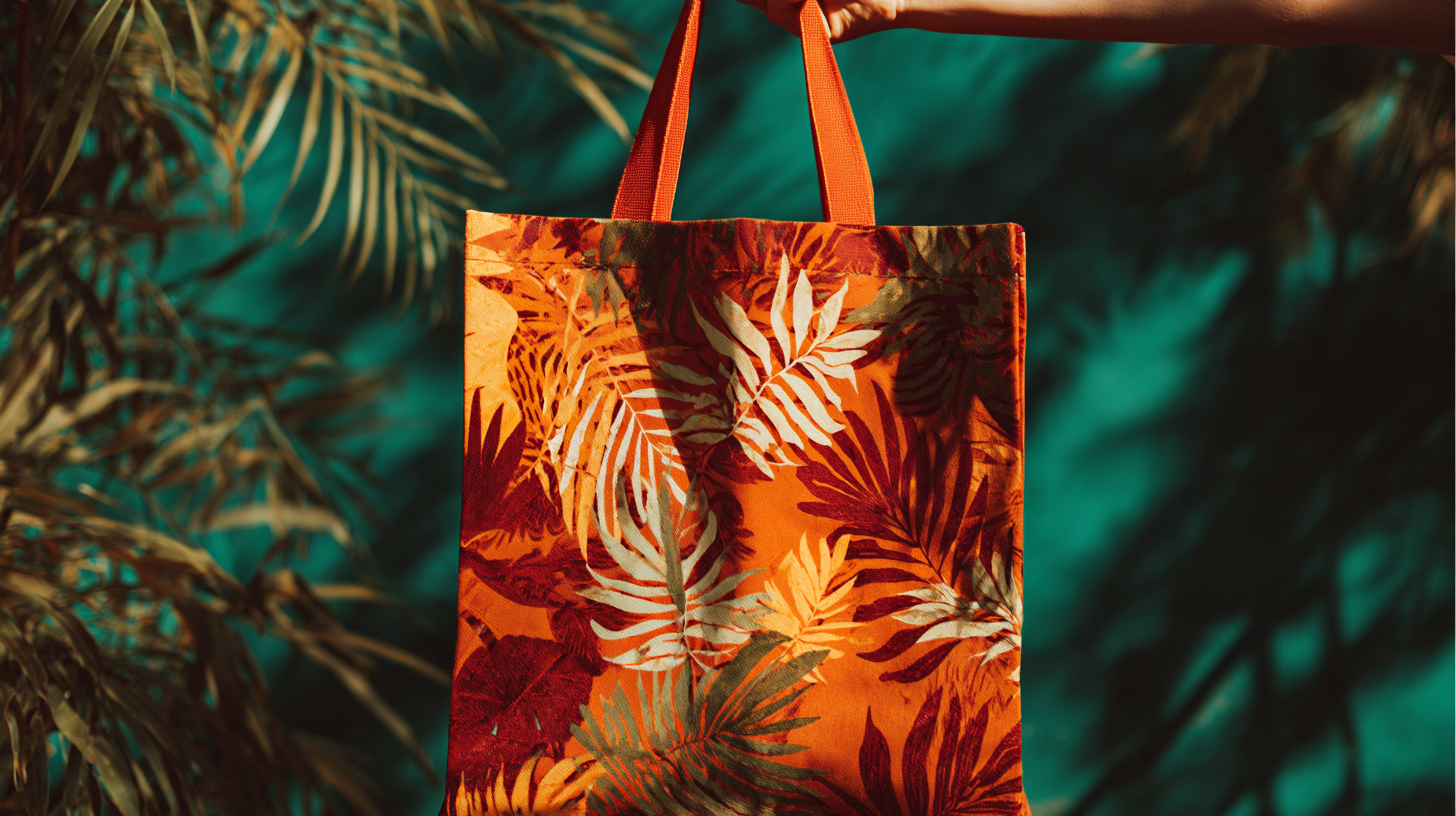
5 Essential Tips for Choosing Sustainable Printed Bags: Boost Your Brand's Eco-Friendly Image
In recent years, the demand for sustainable printed bags has surged, reflecting a significant shift in consumer preferences towards eco-friendly products. According to a report from Smithers Pira, the global market for sustainable packaging is expected to reach $429 billion by 2027, driven by increasing environmental awareness and regulatory changes. As businesses strive to enhance their brand’s eco-friendly image, choosing the right printed bag has become crucial. With a myriad of options available, selecting sustainable materials and processes not only helps reduce environmental impact but also reinforces the company’s commitment to sustainability. By prioritizing eco-conscious decisions in their packaging strategies, brands can position themselves favorably in a competitive market that increasingly values sustainability.

Understanding the Growing Demand for Sustainable Packaging in 2023
As we step into 2023, the demand for sustainable packaging continues to gain momentum, driven by increased consumer awareness and environmental concerns. With the global packaging market valued at approximately $1,052.96 billion in 2023, it is projected to reach $1,456 billion by 2032, indicating a substantial growth trajectory. This trend is particularly evident within the snack packaging sector, which is expected to rise from $20.07 billion in 2024 to $29.15 billion by 2032, at a CAGR of 4.77%. Brands need to adapt to this changing landscape to maintain their competitive edge and resonate with eco-conscious consumers.

Bioplastics are emerging as a prominent alternative in sustainable packaging, with the U.S. bioplastics market anticipated to exhibit a robust compound annual growth rate of 19.3%, increasing from $1.45 billion in 2022. Similarly, molded fiber packaging is also on the rise, with forecasts suggesting a growth from $813 million in 2023 to $1.256 billion by 2030, at a CAGR of 6.41%. As businesses navigate these shifts, understanding the importance of eco-friendly materials in consumer perceptions is crucial not only for compliance but also for fostering brand loyalty in an environmentally-aware market.
Key Materials for Eco-Friendly Printed Bags: Assessing Industry Standards
When choosing sustainable printed bags, it’s crucial to consider the materials used, as they play a significant role in assessing the overall eco-friendliness of the product. Opting for bags made from recycled materials or natural fibers can greatly reduce environmental impact. For instance, recent research highlights the importance of mechanical recycling processes and the use of sustainable polymers in creating flexible packaging that meets industry standards. These advancements not only aid in minimizing packaging waste but also enhance the lifecycle of printed bags, ensuring they contribute positively to circular supply chains.
Additionally, brands should be aware of the regulations and certifications associated with eco-friendly materials. Federal guidelines and industry standards are constantly evolving, focusing on reducing pollution and promoting sustainability. Understanding these standards can help businesses choose suppliers who prioritize environmentally responsible practices. By aligning their packaging choices with these frameworks, brands can not only improve their reputation but also actively participate in the global effort to combat challenges such as plastic waste and microplastic pollution.
5 Essential Tips for Choosing Sustainable Printed Bags: Boost Your Brand's Eco-Friendly Image
| Material Type | Recyclability | Biodegradability | Durability | Cost-Effectiveness |
|---|---|---|---|---|
| Organic Cotton | Yes | Yes | High | Moderate |
| Recycled Paper | Yes | Yes | Moderate | Low |
| Bioplastic | Yes | Yes | High | Moderate |
| Hemp | Yes | Yes | Very High | High |
| Kraft Paper | Yes | Yes | Low | Very Low |
Evaluating the Lifecycle Impact of Different Bag Options on the Environment
When choosing sustainable printed bags for your brand, it is crucial to evaluate the lifecycle impact of various materials on the environment. Different bag options—from biodegradable to recyclable materials—each come with their own environmental footprints. A thorough assessment of how each bag affects natural resources, energy consumption, and waste generation is essential. Notably, options like cotton or jute bags not only offer durability but also have a lower environmental impact when sourced responsibly.
One essential tip is to prioritize materials that can be repurposed or reused. Look for bags that are designed for multiple uses, increasing their lifespan and reducing the need for single-use products. Additionally, consider bags made from recycled materials. By choosing post-consumer recycled bags, you not only reduce waste but also support the circular economy, reinforcing your brand’s commitment to sustainability.
Lastly, remember to communicate the sustainable choices you’ve made to your customers. Educating your audience about the lifecycle benefits of your printed bags can enhance your brand’s eco-friendly image. Use this opportunity to highlight how their purchase contributes to environmental protection, turning your bags into not just a product, but a statement of shared values.
Environmental Impact of Different Bag Materials
This chart illustrates the lifecycle impact of various bag materials on the environment, helping brands to make informed decisions when choosing sustainable printed bags.
Strategies for Effective Branding with Sustainable Printed Bags
When it comes to branding, the power of sustainable printed bags cannot be underestimated. In a marketplace increasingly attuned to eco-consciousness, using these bags as a branding tool not only reflects a commitment to sustainability but also enhances your brand's image. These bags serve a dual purpose: they protect products while acting as a canvas for your brand's story, values, and commitments to the environment. By prominently featuring your brand’s logo and messaging on sustainable bags, you create a tangible reminder of your eco-friendly initiatives that engages customers beyond the first purchase.

To effectively leverage sustainable printed bags for branding, consider incorporating eye-catching designs and educational statements about sustainability. This approach not only grabs attention but also encourages discussions around environmental impact. As the on-demand printing market continues to grow significantly, with an estimated value of $8.03 billion in 2023, brands have a unique opportunity to cater to consumer preferences for sustainable and customizable solutions. By adopting such strategies, your brand can stand out in a crowded marketplace and foster loyalty among environmentally-conscious consumers.
Cost-Effectiveness of Sustainable Packaging in Today's Market: A Data-Driven Analysis
In today’s market, the cost-effectiveness of sustainable packaging has become a pivotal factor for brands looking to enhance their eco-friendly image. As consumers increasingly gravitate towards environmentally responsible choices, businesses must re-evaluate their packaging strategies. A recent analysis shows that investing in sustainable printed bags not only reduces carbon footprints but also offers long-term financial benefits. Companies are now discovering that the initial costs associated with eco-friendly materials can be offset by savings in waste disposal and consumer loyalty.
Moreover, sustainable packaging plays a crucial role in brand differentiation. Consumers are willing to pay a premium for products that come in eco-friendly packaging, making it a strategic investment rather than a mere expense. Data indicates that brands embracing sustainable practices are more likely to see an increase in customer retention rates, as conscious consumers prefer to support businesses that align with their values. Therefore, the integration of sustainable printed bags into your packaging strategy not only benefits the environment but also positions your brand for financial success in a competitive marketplace.



